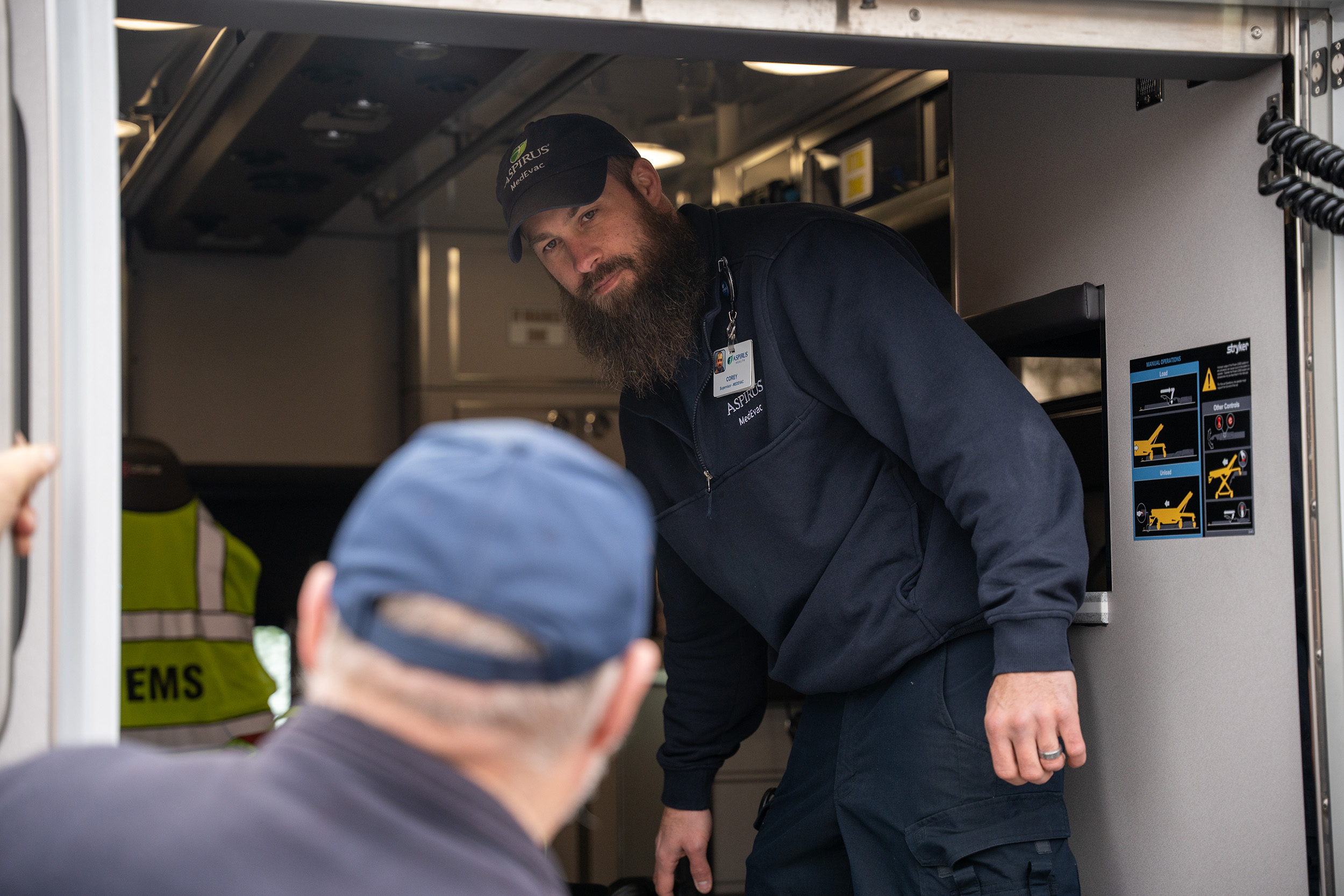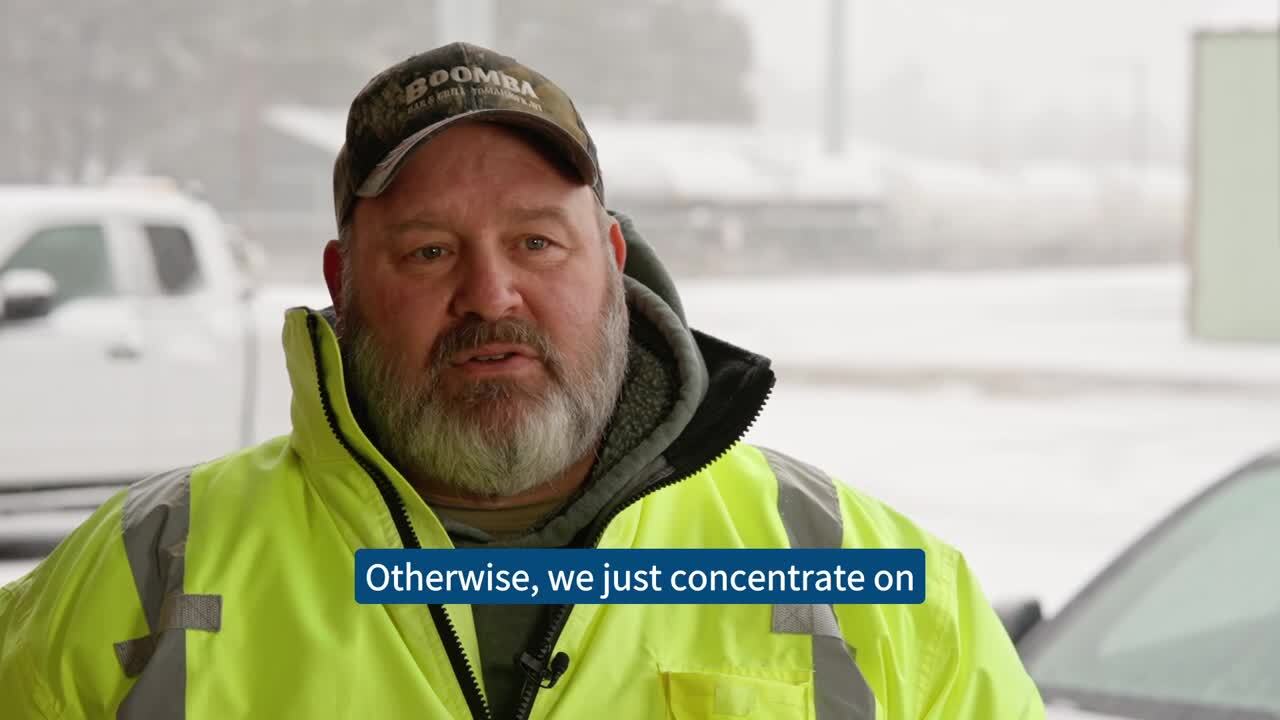Winter Road Safety: Clearing the Path for Emergency Responders
1/12/2024

Corey Resch, AEMT/Supervisor, Aspirus MedEvac
As winter covers the
roads with snow and icy conditions, it's essential for emergency services,
highway maintenance and the general public to navigate them safely.
Corey Resch,
AEMT/Supervisor with Aspirus MedEvac, emphasizes the unique challenges faced by
emergency responders this time of year.
"During the
winter, road conditions can be slippery and it can be hard to see with the snow
coming down, especially with the blinding lights at night,” says Resch. “We’re
trying to respond to emergencies quickly while focusing on getting there safely.”
Resch advises other
drivers sharing the road to remain vigilant in snowy and freezing rain
conditions, providing the following guidance when encountering an ambulance
with its lights flashing:
- Avoid
slamming on your brakes
- Slow
down gradually and pull off to the side
- Be
aware that one emergency vehicle may indicate others are coming soon
- Keep
an eye out, know your surroundings, and ensure a safe path for emergency
vehicles
For those requiring
emergency services during challenging road conditions, be aware that unplowed
roads and varying vehicle capabilities may impact response times. Resch
requests patience, assuring that emergency responders are doing their best to
reach locations safely. He notes, “Certain ambulances might not have four-wheel
drive, which can slow down travel on unplowed roads. We're doing our best to
get there safely and as quickly as we can.”
Sometimes,
accomplishing this requires a bit of extra help from community partners, such
as the Marathon County Highway Department (MCHD).
The MCHD assists
during the winter by pretreating, or spraying salt brine on, state highways,
county roads, and specific areas like bridge decks and high flyovers. In heavy
snow events, the MCHD Highway Operations Supervisor John Bangart assures the
availability of 24-hour snowplow service on key routes, with direct
communication channels for emergency services to contact plow drivers.
"It’s very
important for the highway department to be out there making sure we have safe
roads so first responders can get out there and save people’s lives," says
Bangart.
He emphasizes the
importance of driver awareness around snowplows, stating, ‘If you see green and
yellow lights on a truck, please slow down, give them plenty of room behind,
and avoid passing. Our drivers put in long hours and are out there for your protection
– to make roads safe for everyone.”
Remember, winter
road safety is a shared responsibility. Whether you're a part of the general
public or an emergency services professional, staying informed, driving
cautiously, and respecting the roles of each party can make a significant
difference in winter road safety.
For more health
content, visit the Aspirus
Media Center.

Back to all Posts